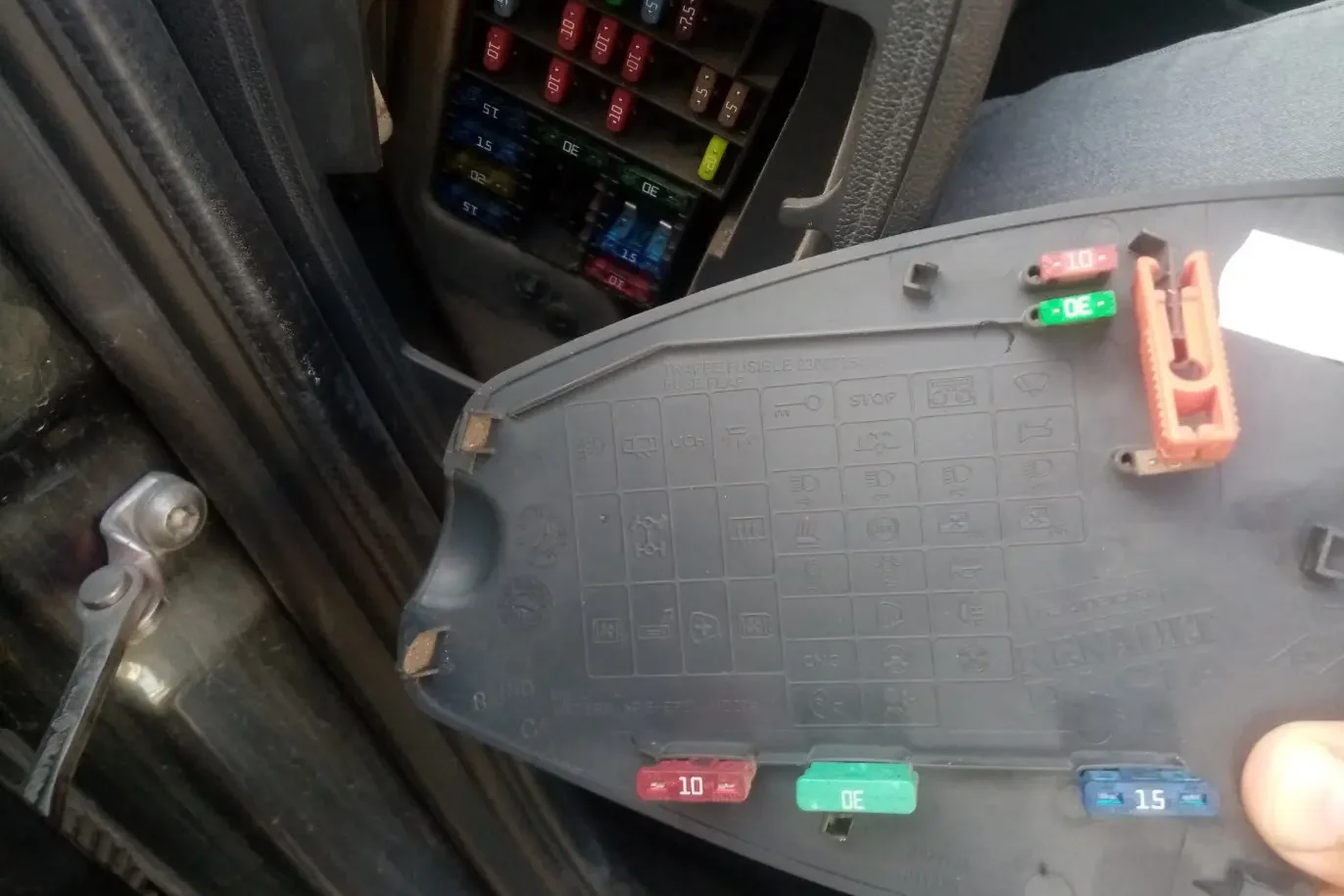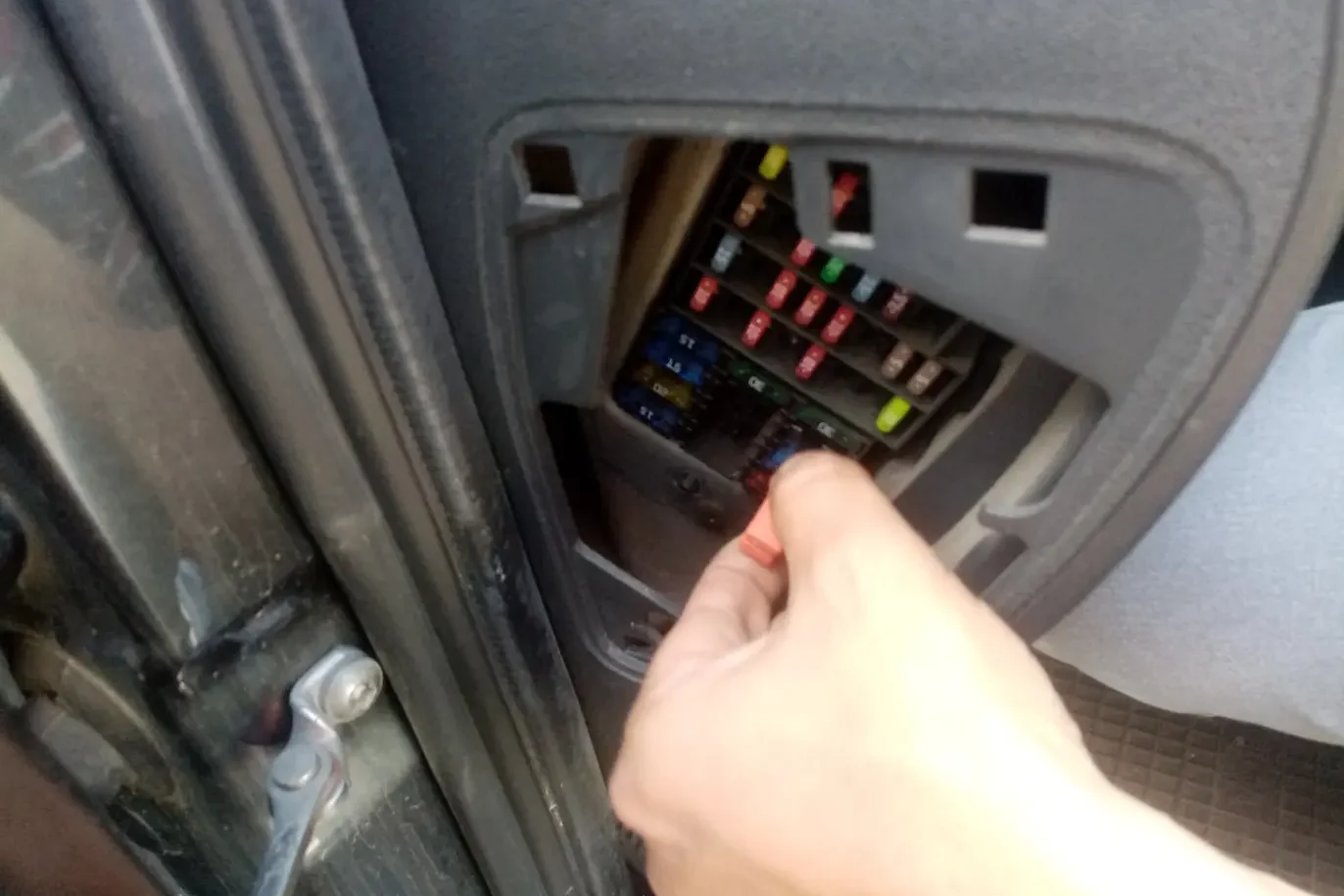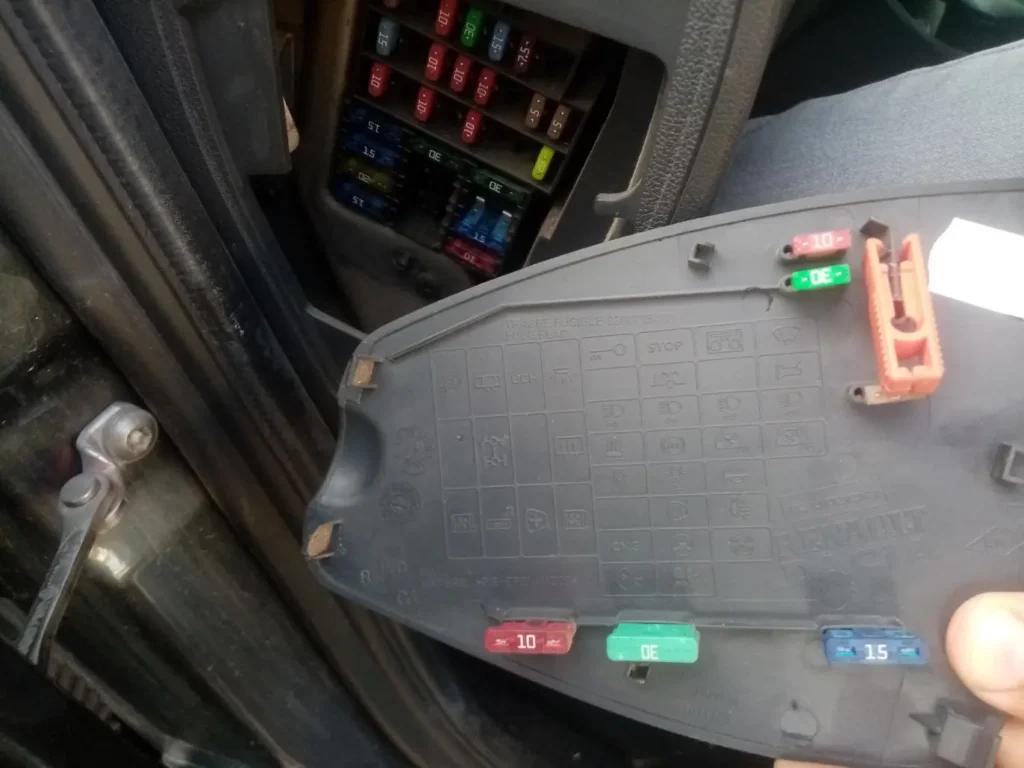“Your Headlights Just Died? Let Me Tell You What’s Really Going On…”
Picture this: You’re cruising down a dark road when—BAM!—your headlights flicker out. Radio goes silent. Dashboard lights dim. Your heart starts racing…”Is my car dying?”
Relax. Let me tell you a secret: 9 times out of 10? It’s just a 2 $ fuse. And I’m going to show you exactly how to fix it—no mechanic needed.
Here’s What We’ll Tackle Together:
✔ The sneaky reason fuses blow (and why it’s actually a GOOD thing)
✔ Where your car hides its “secret” fuse boxes (most owners never check)
✔ My 5-minute fuse swap trick (even if you’ve never touched a car before)
✔ Red flag warnings (when a blown fuse means serious trouble)
First things first; why should you care about these little plastic tabs?
Table of Contents
Why Your Car’s Fuses Are Its Unsung Heroes (And Could Save You Thousands!)
Let me tell you something most drivers don’t realize – those tiny fuses are actually your car’s first line of defense against electrical disasters. As an ASE-certified technician with 12 years in the auto repair industry, I’ve seen firsthand how these little protectors save drivers from costly repairs every single day.
Here’s the shocking truth about fuses:
• They’re designed to FAIL – but that’s actually brilliant engineering! When too much current flows (like during a power surge), the fuse intentionally “blows” to:
- Stop electrical fires before they start (I’ve seen melted wiring harnesses that would make your hair stand up)
- Protect your car’s brain (the ECU) from frying (a $1,500+ repair)
- Save delicate electronics in your infotainment system
What These Little Guardians Protect:
✔️ Critical Systems:
- Fuel pump (your engine would die without it)
- Headlights (safety first, especially at night)
- Windshield wipers (try driving in rain without them!)
✔️ Convenience Features:
- Power windows/locks
- USB ports and 12V outlets
- That sweet sound system you paid good money for
✔️ Comfort Components:
- AC and heating fans
- Seat warmers
- Dashboard displays
Remember: When a fuse blows, it’s not failing you – it’s doing its job perfectly. Your next step? Let me show you how to replace it safely… (continue to next section)

Without fuses, a simple wiring fault could cause irreparable damage to your car’s electronics.
A Mechanic’s Guide to Fuse Types: How to Spot the Difference and Why It Matters
After working on thousands of vehicles, I can tell you that not all fuses are created equal—and using the wrong one can lead to big problems. Let me break down what you need to know:
1. Blade Fuses (ATO, ATC, Mini, Micro) – The Modern Standard
✅ Where you’ll find them: Nearly every car made in the last 30 years
✅ Why they’re great:
- Color-coded for easy ID (Red = 10A, Blue = 15A, Yellow = 20A—memorize these!)
- Secure fit (No rattling loose like old glass fuses)
- Wide availability (Any auto store will have them)
🔧 Pro Tip: Always check if your car uses Mini or Micro blades—they look similar but aren’t interchangeable!
2. Glass Tube Fuses – The Old-School Relic
🚗 Found in: Classic cars (pre-1990s) and some motorcycles
⚠️ Why they’re tricky:
- Prone to corrosion (I’ve seen many fail just from moisture)
- Fragile (One bump and the glass can crack)
- Harder to inspect (Is that filament broken or just hard to see?)
🛠 My Advice: If your vintage ride still uses these, carry spares—they’re getting harder to find!
3. Ceramic Fuses – The Tough Guy
🌡 Where they excel: High-heat areas (like under-hood fuse boxes in European cars)
🔥 Key perk: Handles heat better than plastic blades (no melting under heavy loads)
🔍 Watch out: They look like glass fuses but don’t mix them up!
4. Resettable Fuses (Circuit Breakers) – The “Lazy” Solution
♻️ How they work: Trip when overloaded, then reset themselves after cooling
💪 Common uses: Power windows, sunroofs, and other high-draw systems
🤔 Trade-off: More expensive, but cheaper than replacing fuses repeatedly
How Fuses Secretly Save Your Car (And Your Wallet!)
Let me let you in on a little secret – those tiny fuses in your car are actually brilliant bodyguards working 24/7 to protect your vehicle’s electrical system. As a master technician, I’ve seen how these unsung heroes prevent thousands in damage every single day. Here’s the real story:
1. Overcurrent Protection: Your Circuit’s Speed Limit
What’s really happening:
- When your phone charger or stereo tries to pull too much power (like a 20A draw on a 10A circuit)
- The fuse says “Nope!” and blows before your wiring turns into a toaster
🛠 Pro Tip From the Shop:
I had a customer whose aftermarket amp kept blowing fuses. Turns out he installed it with speaker wire instead of proper power cable – those fuses saved his car from becoming a barbecue!
2. Short Circuit Protection: Instant Fire Prevention
Real-world scenario:
- Rodents chew through insulation (happens way more than you’d think)
- Bare wire touches metal frame → instant short circuit
- The fuse reacts in milliseconds to break the connection
🔥 Scary Stat:
A dead short can generate enough heat to melt copper wiring in seconds.
3. Surge Protection: The Misunderstood Hero
What fuses CAN do:
- Stop massive spikes (like when your alternator goes berserk)
- Prevent battery shorts from becoming fireworks
What they CAN’T do:
- Protect against small voltage fluctuations
- Replace proper surge protectors for sensitive electronics
🔌 Fun Fact:
Your car’s computer has its own special fuses. Why? Because a 5A fuse is cheaper than a 1,500 $ ECU!
Why This Matters To You:
Understanding these protections helps you:
✔ Diagnose why a fuse blew (was it a one-time overload or serious short?)
✔ Avoid dangerous “fixes” like wrapping foil around a blown fuse
✔ Know when to call a pro (repeated blows mean deeper issues)
Coming Up Next:
I’ll show you how to actually test these protections yourself with just a multimeter – no shop visit needed!
Fuse Fix-It Like a Pro: A Mechanic’s Step-by-Step Guide
Let me walk you through exactly how I replace fuses in my shop—it’s easier than you think, but there are a few tricks most DIYers miss. Grab your fuse puller (or pliers), and let’s get hands-on!
Step 1: Find Those Hidden Fuse Boxes
(I’ve crawled under enough dashes to know the secrets!)
🔎 Typical Locations:
- Under dash (Driver’s side kick panel or behind the glovebox)
- Under hood (Near battery or along fender wells)
- Trunk (Some luxury cars hide them here)
🛠 Pro Tip: No manual? Google “[Your Car Year Make Model] fuse box location”—you’ll often find forum pics or videos from guys like me who’ve done this before.
Step 2: Spot the Bad Fuse (Like a Detective)
(This is where most people mess up!)
✅ Visual Clues:
- Broken filament (Hold it up to light—see that tiny snapped wire?)
- Discolored plastic (Brown/black marks = overheating)
- Melted ends (Red flag for serious electrical issues!)
🔦 Shop Trick: Use your phone’s flashlight to illuminate the fuse—makes cracks easier to spot.

Step 3: Safe Fuse Removal (Without Breaking Anything)
(Ever snapped a fuse in the box? Here’s how to avoid it.)
🛠 Tools:
- Use the fuse puller (Usually clipped inside the box lid)
- No puller? Needle-nose pliers with tape on the jaws (Prevents scratches)
⚠️ Warning: Never yank sideways—you could damage the fuse socket. Pull straight out with steady pressure.

Step 4: Install the New Fuse (The Right Way)
(This is where DIYers start fires—don’t be that person!)
🔌 Critical Rules:
- Match amps exactly (10A fuse → 10A replacement)
- Same type (Mini vs. Micro blades aren’t interchangeable!)
- Snug fit (Should click in place—if loose, check for bent contacts)
💡 Real-World Example: Last week, a customer used a 30A fuse in a 15A slot “because it fit.” Melted his wiring harness (800 $ repair). Don’t do this!
Step 5: Test It Like a Mechanic Would
(Because “hoping it works” isn’t a strategy!)
🔧 Professional Verification:
- Turn on the problem component (radio, lights, etc.)
- Check for proper operation (No flickering? Good!)
- Feel the new fuse after 1 minute (Warm is okay; hot means trouble!)
🚗 Bonus Check: Start the engine and test again—some circuits behave differently when running.
FAQ
1. “Can I drive with a blown fuse?”
- Depends: Headlights? Pull over. Radio? Maybe. Fuel pump? Your car won’t go far!
2. “Why does my fuse blow only in rain?”
- Classic water intrusion. Check door seals and sunroof drains.
3. “Can I use a penny instead of a fuse?”
- Only if you want to meet your local fire department!
4. “Where’s the best place to buy fuses?”
- Auto stores for instant fixes, but Amazon has better bulk deals.
Final Thought:
Fuses are your car’s silent guardians. Now that you know how to diagnose repeat blowouts, you’re not just saving money—you’re preventing dangerous electrical fires.
Now I want to hear from YOU! Drop a comment below and tell me:
- What’s the weirdest thing you’ve ever found when checking fuses? (I once found a melted gum wrapper—don’t ask!)
- Did this guide save you a trip to the mechanic?
- What other car fixes do you want me to demystify?
Your stories and questions help me create even better guides. Plus, I reply to every comment—so fire away!


Pingback: Windshield Wiper Motor Problems? Expert Repair & Guide 2025
Pingback: Master Fog Lights: Expert Mechanic Tips for Safe Driving
Pingback: Best LED Headlights for Cars & Bikes: Upgrade in 15 Minutes